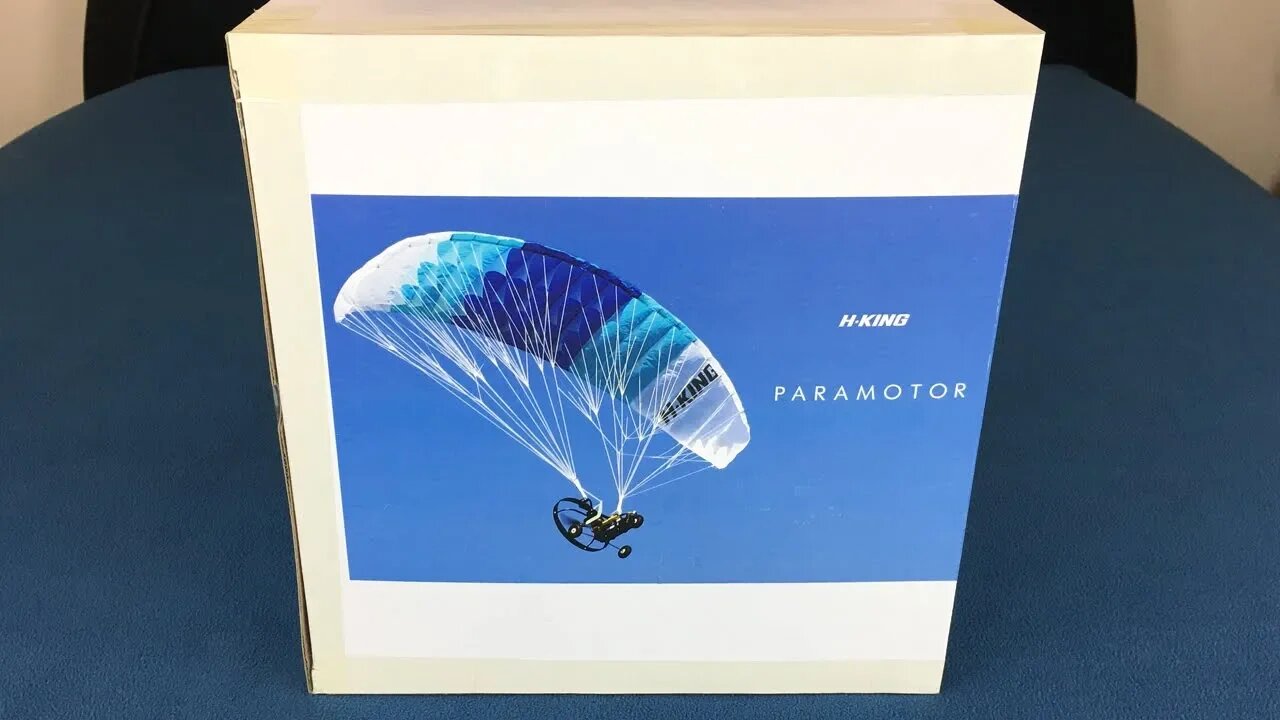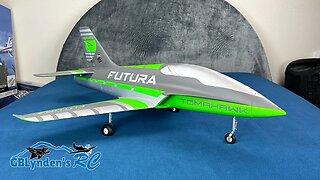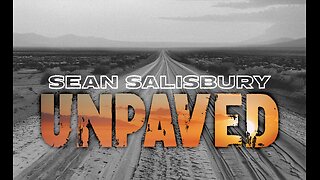Premium Only Content

H-King Paramotor Unboxing Overview Only - Hobbyking RC PPG
This video is a quick unboxing oveview of the brand new H-King Paramotor. This is a 3S RC PPG from Hobbyking.
Link to Hobbyking RC PPG: https://bit.ly/2VXTOcX
Flight Battery Link: https://bit.ly/2HCQCzA
The links in this description are affiliate links. They give me a small commission on sales which helps support the channel and keep it independent: https://www.amazon.com/shop/gblyndensrc
Video Equipment Used To Make This Video:
- Video Camera (Sony AX-33): https://amzn.to/2SmrX5j
- Lapel Mic (Insignia Lapel Mic): https://amzn.to/2Rb2tu9
- Light Boxes (ESDDI 20"X28" Softbox): https://amzn.to/2rPnCMh
- Camera SD Card (SanDisk Extreme Pro): https://amzn.to/2BzXZU0
H-King PPG Review Notes:
Pros:
- It looks amazing in the sky
- The kit comes PNP
- landing it is easy once you understand the controls
- The landing gear and frame balance well with the Paramotor Wing
- Long flight time with the recommended battery pack.
- It is very durable. Even the PPG Wing & lines are durable.
Cons:
- It requires some specific programming to make it work correctly.
PPG Unboxing
Social Media Links:
Facebook: https://www.facebook.com/GBLyndensRC
Instagram: https://www.instagram.com/GBLyndensRC/
Twitter: https://twitter.com/GBLyndensRC
I am really looking forward to sharing wonderful Paraglider flight videos full of PPG Flying with you guys, so stay tuned to this channel for more videos coming very soon!
If you're not familliar with the term PPG, it stands for Powered Paraglider, which is essentially a fan strapped to the back of a cart or a person.
A famous group of guys in the RC Community that fly Powered PPG's are the Flite Test guys, Josh Bixler in particular.
This is how Hobbyking describes this RC Paraglider:
The HobbyKing™ Paramotor is extremely easy to fly due to its very gentle and stable flight characteristics yet once you are used to it, it will perform loops and rolls with ease. Due to the design the huge high performance 2400mm sail opens quickly for easy launching and it will retain its shape even in turbulence. The single skin durable sail is made from 100% ripstop fabric and comes pre-rigged with tough polyethylene lines and ready to attach to the durable aluminum gondola. It does require a computer radio with mixing and servo control curves, to see what is involved in the radio set up please watch the attached video and also the one for the setting up of the parafoil itself.
There is a high level of prefabrication so assembly time is minimal and it is Plug-N-Fly so all you require is your own transmitter, receiver, and battery. The Paramotor is fitted with a powerful 3530-1400KV brushless motor swinging a 10 x 4.7 propeller, it also has a 50 amp electronic speed controller with 5 amp BEC and 2 powerful 15kg high torque metal geared servos. A 3S lipo battery is recommended and it can vary in capacity to suit different flying conditions. The recommended flying weight is 1.6~2.0kg, in light wind conditions it is best to put a lighter battery in to keep near the 1.6kg weight. In windy conditions, it is better to put a heavier battery in to fly around the 2kg mark. The undercarriage is easily removed for hand launching and catching and also for slope soaring.
If you fancy trying something a little different then the HobbyKing Paramotor is for you. Great fun to fly without being too challenging and it looks great in the air. Pre-assembled and Plug N Fly also means you can be airborne very quickly after taking delivery.
Here is some more info on what inspired this RC Paramotor Trike:
"Powered paragliding, also known as paramotoring or PPG, is a form of ultralight aviation where the pilot wears a motor on their back (a paramotor) which provides enough thrust to take off using a paraglider. It can be launched in still air, and on level ground, by the pilot alone — no assistance is required.
Powered paragliders usually fly between 15 to 50 mph (24 to 80 km/h) at altitudes from 'foot-dragging on the water' up about to 24,000 ft (7,300 m) or more although most flying is done under 500 ft (150 m) AGL.
The paramotor, weighing from 45 to 90 lb (20 to 41 kg) is supported by the pilot during takeoff. After a brief run (typically 10 ft (3.0 m)) the wing lifts the motor and its harnessed pilot off the ground.
A powered paraglider differs from a powered parachute (PPC) primarily in size, power, control method, and number of occupants. Powered paragliders are smaller, use more efficient (but more difficult to manage) paraglider wings, and steer with brake toggles like sport parachutists. Powered parachutes typically use easier-to-manage but less efficient wings, have larger engines, steer with their feet, and may be able to take along passengers."
Stay tuned for more video like this and of my new HobbyKing H-King Flycat EDF Jet!
-
 5:51
5:51
GBLynden's RC
1 year agoDetailed Unboxing | FMS Futura 64mm EDF Sport Jet
279 -
 1:15:58
1:15:58
DeVory Darkins
3 hours agoLIVE NOW: Democrats SABOTAGE GOP effort to reopen Government
90K50 -
 1:21:21
1:21:21
Tucker Carlson
3 hours agoThe Global War on Christianity Just Got a Whole Lot Worse, and Ted Cruz Doesn’t Care
38.5K214 -
 10:50
10:50
Dr. Nick Zyrowski
2 days agoDoctors Got It Wrong! This LOWERS CORTISOL In Minutes!
12.3K3 -
 24:14
24:14
Verified Investing
2 days agoBiggest Trade As AI Bubble Begins To Burst, Bitcoin Flushes Through 100K And Gold Set To Fall
8.16K -
 1:12:28
1:12:28
Sean Unpaved
3 hours agoAB's Dubai Drama: Extradited & Exposed + NFL Week 10 Locks & CFB Week 11 Upsets
19.7K -
 2:06:08
2:06:08
The Culture War with Tim Pool
5 hours agoDemocrats Elect Man Who Wants To Kill Conservatives, Time For An Exorcism | The Culture War Podcast
121K101 -
 1:36:52
1:36:52
Steven Crowder
7 hours agoMamdani's Anti-White Victory Must Be America's Wake Up Call
314K367 -
 2:18:38
2:18:38
Side Scrollers Podcast
5 hours agoGTA 6 GETS WRECKED AFTER ANOTHER DELAY + India THREATENS YouTuber Over Video + More | Side Scrollers
25.6K6 -
 1:00:20
1:00:20
Simply Bitcoin
8 hours ago $0.08 earnedThe Bitcoin Crucible w/ Alex Stanczyk ft Tomer Strolight - Episode 7
39.4K1